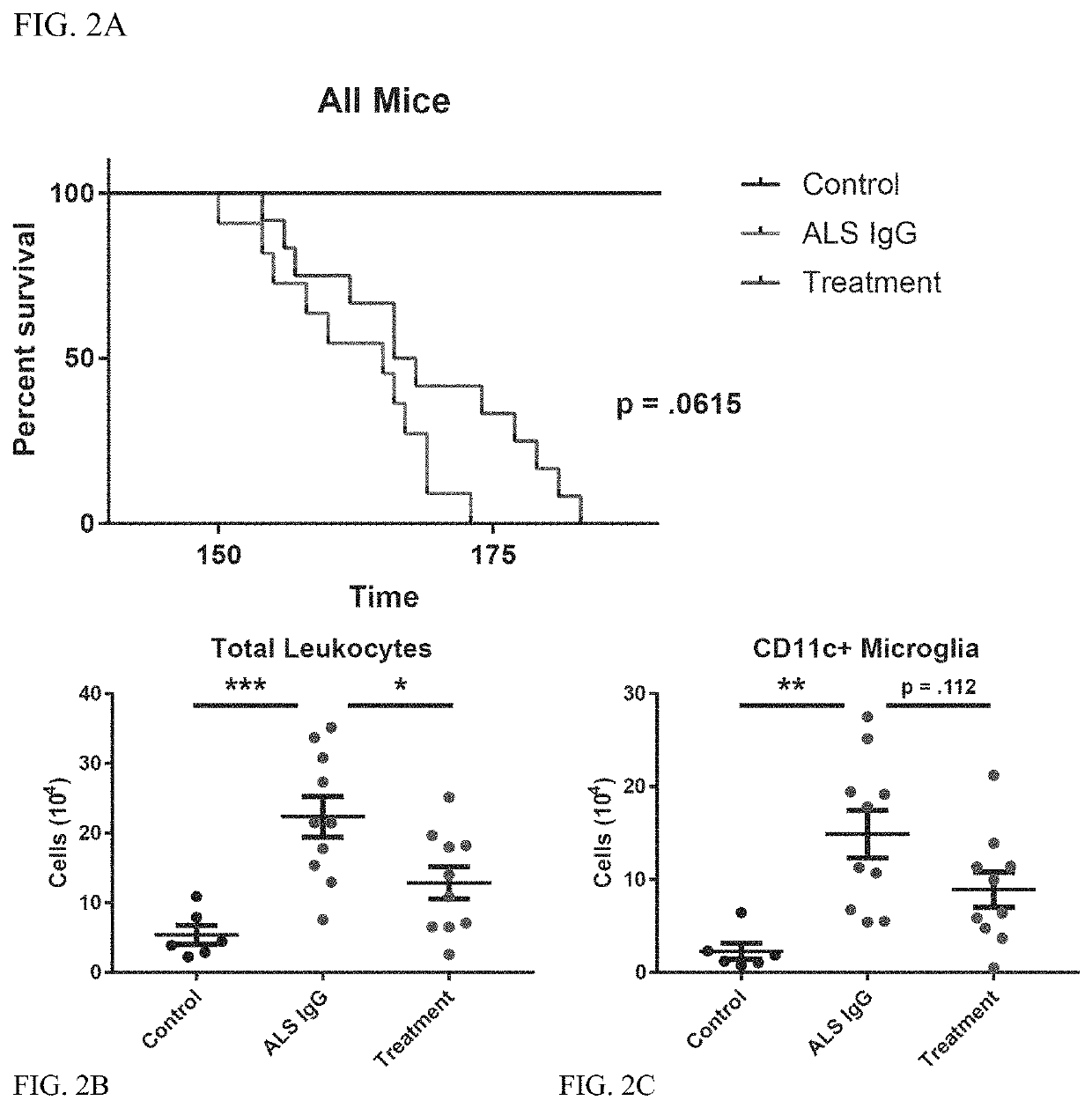Methods for treating amyotrophic lateral sclerosis
a technology of amyotrophic lateral sclerosis and amyotrophic lateral sclerosis, which is applied in the direction of heterocyclic compound active ingredients, drug compositions, nervous disorders, etc., can solve the problems of incredibly vulnerable nk cell population, inhibit nk cell maintenance, inhibit nk cell expansion and cytotoxicity against other cells, and reduce perforin levels.
- Summary
- Abstract
- Description
- Claims
- Application Information
AI Technical Summary
Benefits of technology
Problems solved by technology
Method used
Image
Examples
examples
[0049]The following examples are illustrative, but not limiting, of the compounds, compositions, and methods of the present invention. Other suitable modifications and adaptations of the variety of conditions and parameters normally encountered in clinical therapy and which are obvious to those skilled in the art are within the spirit and scope of the invention.
example i
[0050]This example demonstrates that NK cells contribute to ALS progression.
[0051]There is an important immune component to the progression of ALS. Indeed, the immune system is protective during early stages of the disease, but becomes destructive as disease progresses. As such, targeting specific immune populations can extend lifespan of ALS mice.
[0052]Experiments were conducted to test if NK cells contribute to ALS progression. It has been shown that NK cells kill infected, cancerous or dying cells, and are increased in ALS patient blood compared with healthy patients. NK cells have been shown to be increased in spinal cords of ALS mice. NK cells kill other cells that are missing MHC-1. As ALS related motor neuron cells lack MHC-1, the role of NK cells in ALS progression was investigated.
[0053]To test whether NK cells contribute to ALS progression, SOD1G93A ALS mice were treated with a weekly dose of NK cell depleting antibody and mouse survival and CNS inflammation assessed. The ...
example ii
[0054]As noted, it has been found that NK cells accumulate in the central nervous system (CNS) of ALS mice (see, Chiu, I. M., et al., Proc Natl Acad Sci USA, 2008. 105(46): p. 17913-8; Finkelstein, A., et al., PLoS One, 2011. 6(8): p. e22374), that molecular signals that drive NK cell proliferation and activation are increased in the peripheral blood and CNS of ALS patients (see, Rentzos, M., et al., Eur Neurol, 2010. 63(5): p. 285-90), and that motor neurons in both ALS mice and human patients are more vulnerable to NK cell-mediated damage (see, Song, S., et al., Nat Med, 2016. 22(4): p. 397-403). The results presented in Example I indicate that depletion of NK cells can reduce neuroinflammation in ALS mice and increase survival. In addition, as ALS patients have increased NK cell levels during early stages of disease such results indicate a targeting of NK cells is an attractive ALS therapy. In addition, as tofacitinib is capable of reducing peripheral NK cells in mice (see, Shima...
PUM
| Property | Measurement | Unit |
|---|---|---|
| concentration | aaaaa | aaaaa |
| pharmaceutical compositions | aaaaa | aaaaa |
| fluorescent intensity | aaaaa | aaaaa |
Abstract
Description
Claims
Application Information
 Login to View More
Login to View More - R&D
- Intellectual Property
- Life Sciences
- Materials
- Tech Scout
- Unparalleled Data Quality
- Higher Quality Content
- 60% Fewer Hallucinations
Browse by: Latest US Patents, China's latest patents, Technical Efficacy Thesaurus, Application Domain, Technology Topic, Popular Technical Reports.
© 2025 PatSnap. All rights reserved.Legal|Privacy policy|Modern Slavery Act Transparency Statement|Sitemap|About US| Contact US: help@patsnap.com



